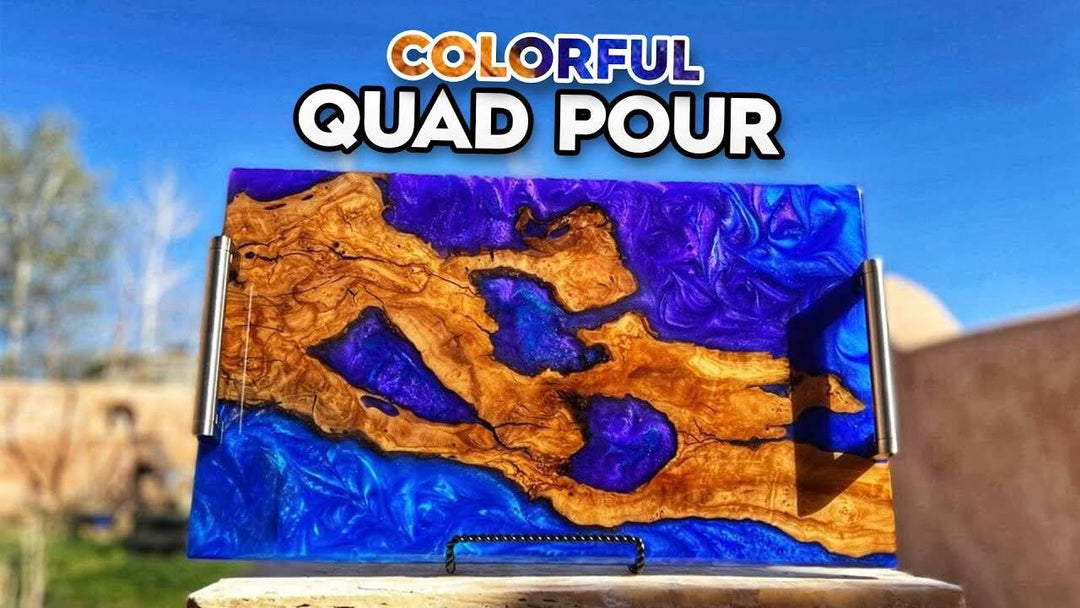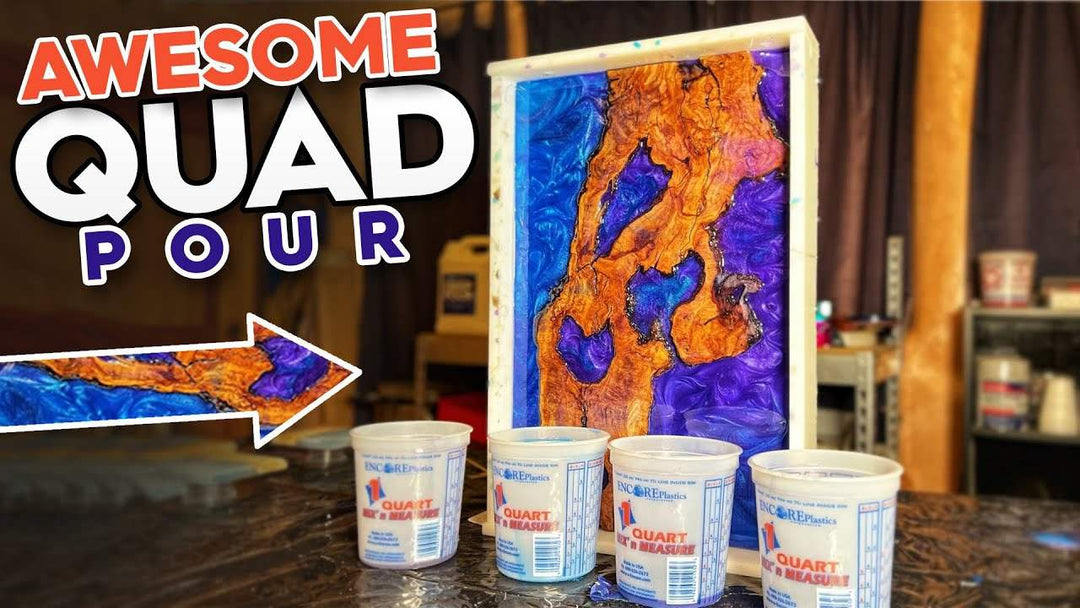Practical Tips For Using Tabletop Epoxy Resin Like A Pro
Working with tabletop epoxy can be a bit of a learning curve for beginners. Incorrectly mixing your epoxy can make or break the project! In today’s tutorial, Rob with Upstart Epoxy shows you exactly how to use tabletop epoxy properly to produce amazing epoxy projects. Follow along below!
Skill Level: Beginner/Intermediate/Expert
Estimated Working Time: N/A
What You’ll Need:
Upstart Epoxy Table Top Resin
Buckets
Rubber Gloves
Heat Gun
Porous Wood Of Your Choice
Getting Epoxy Projects Off to a Good Start
If you’re all excited to work on your epoxy projects but aren’t sure how to properly use Upstart’s table top epoxy resin, this tutorial is for you! Before doing any measurements to figure out how much epoxy we're going to need, we grabbed our buckets and wiped them clean.
DIY Tip: always wipe down your mixing vessels before starting your epoxy projects , because if there’s a piece of dust or film inside of it, that will get stuck inside of your epoxy project. Next, make sure you're wearing rubber gloves and glasses to protect your hands and eyes. Don’t forget that epoxy resin is a chemical!
Now, what we're going to do is measure the tabletop and calculate the amount of epoxy resin needed for your epoxy project. . You want to make sure you get the correct amount of epoxy set up for both Part A and Part B. To do this, get the length and the width of your surface. Get the area of it and then multiply those two numbers for the depth of the pour. The flood coat will be about ⅛ of an inch, and the seal coat will be about 1/16 of an inch.
For more detailed instructions, check out our Youtube video linked above! Whatever numbers you reach, it's always a good practice to buy a little bit more epoxy than what you measured just to ensure you have enough for the full project.
DIY Tip: before you start mixing the epoxy, mark the containers as A and B to prevent mistakes. We put Part A and Part B in their own separate containers, and then mix them together in a third container. We pour the parts together slowly, carefully measuring them to ensure an even mix. You don't want any measurements to go over, because it’s important to get the correct pour and 1:1 ratio.
We start to mix that together, spending about 6-7 minutes mixing it by hand. We're careful not to whip it, just try to mix it thoroughly. You'll notice that it becomes a little bit cloudy but that is perfectly normal. As you're mixing it, it should become clear if you have the appropriate 1:1 ratio. Don’t worry about any air bubbles- we’ll get to that later!

Applying the Epoxy to Your Project
Be sure to scrape the sides and bottom of the bucket to make sure you get it 100% combined. You don't want the parts to be separated, because the combination allows the chemical reaction process to start, which hardens the epoxy. If you don't mix well, you might not get a hard surface at the end. But if you do, you're going to have a crystal clear pour with no streaks.
First, we're going to do a seal coat to seal the wood surface, preventing the air pockets that are inside the wood from coming out and causing bubbles on top of the final epoxy pour. We're going to conduct the seal coat, let it cure for four hours, and then we're going to come back with a flood coat. Your epoxy project is almost done!
Let’s do it! We're just going to pour this on the top and make sure it spreads evenly. Make sure to spread it all and take it down the sides, wiping away any drips with the foam spreader. We're going to use the rubber scraper that comes with the epoxy kit to help spread the seal coat around the table top. It's self leveling, so we're not going to worry too much about it being level as we go about. Don’t totally ignore any giant globs of epoxy, but do remember that the epoxy will do its job! Make sure you get a good amount of coverage.

Removing Bubbles and Curing
Next, we ran a heat gun over the table to break up some of the surface bubbles that have come up to make sure it cures flat. Be sure to stay just a few inches back so that your heat gun doesn’t dip into the epoxy as it's curing, and not to use the heat gun for too long.
You can also use a blowtorch, but a heat gun will give you a little bit more control over the amount of heat you’re applying, which makes it less likely that you’ll overheat the surface. If you overheat the surface, the epoxy will scorch and then you're going to have to start over.
Once the first coat started to cure, we were really happy with the outcome and decided not to conduct the seal coat on top of it. The application technique that we used in this epoxy project filled in all of the voids on the word surface and cleared out any air bubbles. at all on this project, I took a look closely at the edges to make sure those were coated really well. And they absolutely work.
Another reason why we skipped the seal coat was because we realized this particular piece of wood was not as porous as originally expected, so this will save us some epoxy and some time. The first coat really penetrated the wood and sealed it appropriately.
Now what we’ll need to do is seal the bottom of the table, because it's still raw wood. Once the epoxy cures, we’ll flip the table upside down, put it on a soft surface, and sand down any of the residual drips that might appear. Immediately after, we’ll add a coat of polyurethane to seal the bottom, which will prevent the wood from moving and changing from humidity. Seal all surfaces of the table to make sure that humidity doesn't get in it so that the wood can flex again.
After the epoxy has hardened and cured, we finished up the job as stated before. When it’s all finished, the table was ready to be installed!





